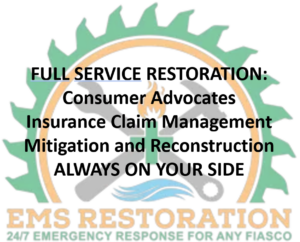Expert Guide to Insurance Claims for Homeowners
Navigate the insurance claims process with ease. Learn essential steps to take after property damage and ensure you receive the coverage you deserve.


24/7 Response


Free Estimates
Insurance Approved


Veteran Owned and Operated
Insurance Claims for Homeowner
Navigating the insurance claims process can be overwhelming for homeowners, especially after experiencing damage to their property. It’s essential to understand the steps to take to ensure you receive the coverage you deserve. Here’s a comprehensive guide on what to do when dealing with insurance claims for restoration work on your property.
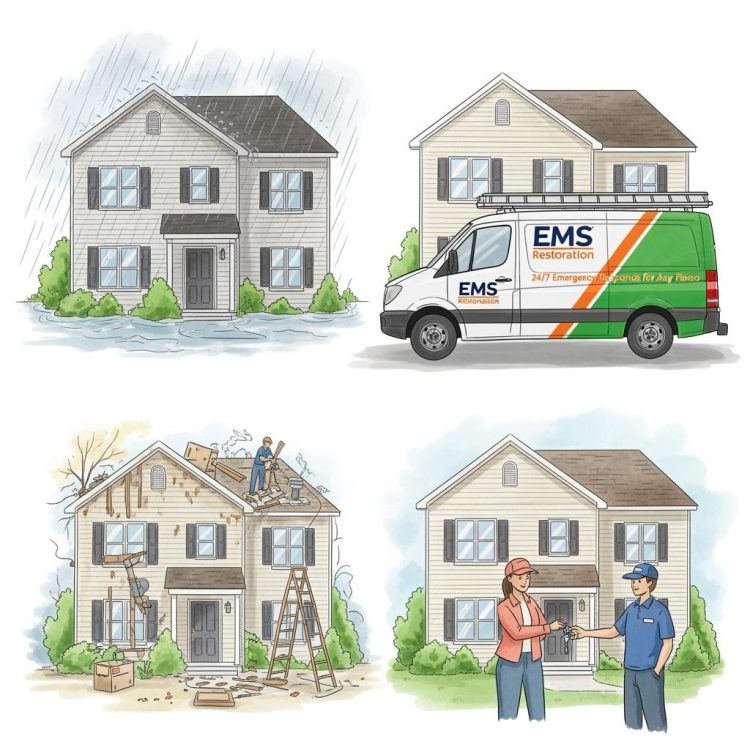

Who to Call and When
- Call a Restoration Company First
- When you suspect a property issue, always contact a restoration company before your insurance provider. If you call your insurance company first, they will initiate a claim before sending help, which can lead to two significant problems:
- Insurance Impact: If the claim is denied or falls below your deductible, it can negatively affect your insurance record.
- TPA Involvement: All insurance companies work with Third Party Administrators (TPAs) to send preferred contractors to your site. These TPAs take 15% to 40% of the total invoice, leading contractors to rush jobs and potentially deliver subpar service. They are also restricted by pricing and rules, limiting their ability to act in your best interest.
- When you suspect a property issue, always contact a restoration company before your insurance provider. If you call your insurance company first, they will initiate a claim before sending help, which can lead to two significant problems:
Evaluate the Situation
- Most restoration companies will quickly assess your issue at no charge. They can advise whether filing an insurance claim is worthwhile and guide you through the entire process.
Expect to Sign an Emergency Work Authorization (EWA)
- If the situation requires immediate action, you may need to sign an EWA. This allows work to commence immediately but also gives the contractor discretion over charges incurred during the mitigation process. This is a legal contract and has guidelines provided by the California State License Board (CSLB).
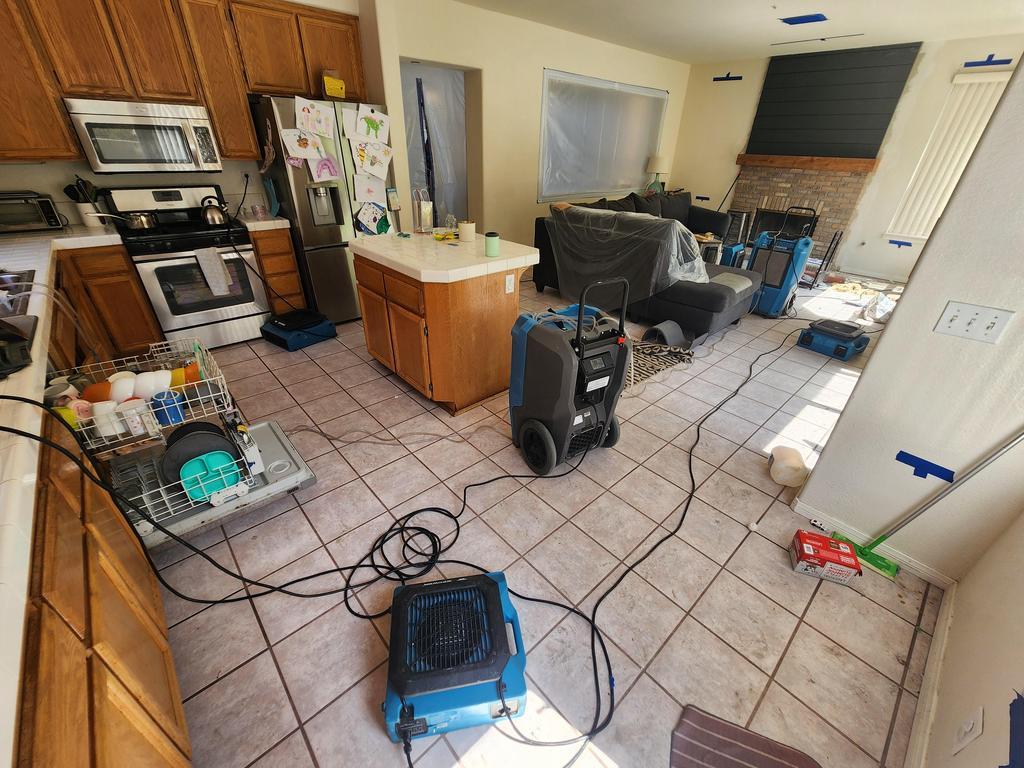

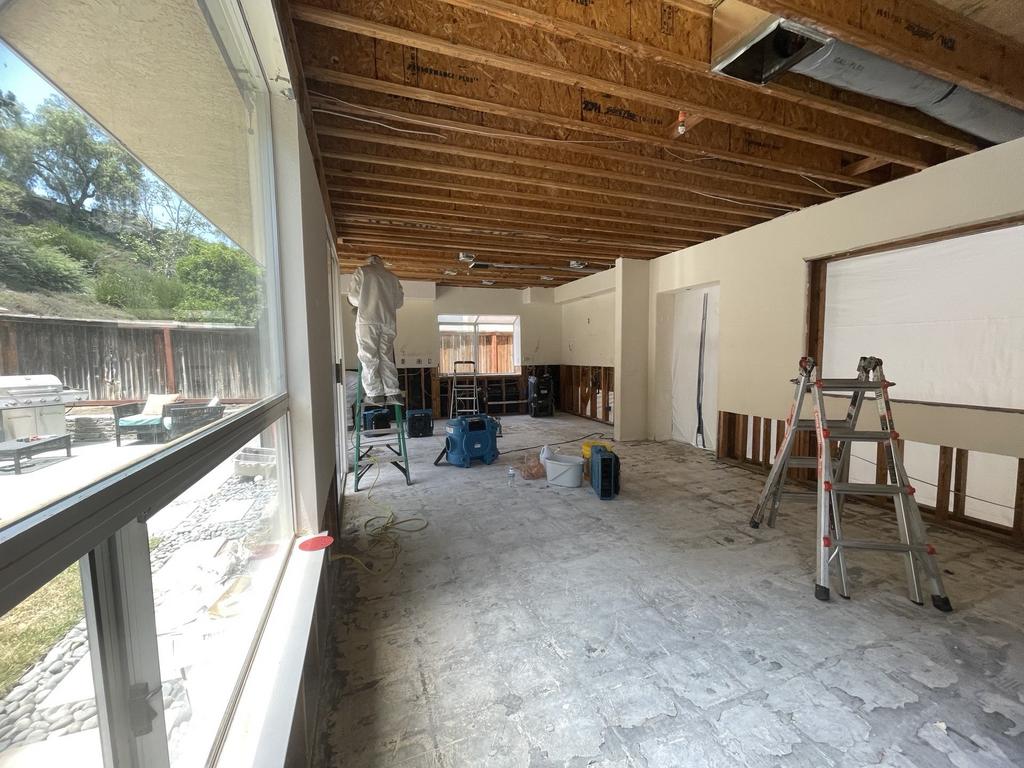



Don’t let insurance pay you $00,000.00
Document Everything
- Take Photos and Videos
- Before any work begins, document everything affected by the incident. Capture overview photos of the rooms impacted and close-ups of the damage. This documentation will be essential for your insurance claim and for justifying expenses. If you a fortunate enough to be reading this before you have a problem then it is best practice to take photos or video of your entire home a few times a year and after any major changes.
Communication and Negotiation
Invoicing and Documentation
- Once the mitigation work is completed, the company will invoice both you and your insurance provider. They should provide detailed documentation to support their invoice and facilitate payment by the insurance company.
Get Multiple Repair Estimates
- Obtain three repair estimates from companies experienced in working with insurance claims. Be cautious of low, vague, or slow bids, as these may indicate potential issues down the line.
- Low Bids: It is a common tactic for contractors to submit low and appealing bids for projects, fully aware that they cannot complete the entire project for the advertised price. This practice can be misleading, as once the work begins, the contractor may issue a change order citing increased material costs or missing items from the original bid. Consequently, the final price ends up being much higher than initially quoted. This can leave homeowners frustrated and feeling misled.
- Vague Bids: Another common practice is the use of vague bids that do not specifically detail each line item involved in the work. For example, a bid might state “door replacement” without clarifying whether it includes hinges, casing, and knobs. This lack of clarity can lead to additional change orders later on when the contractor seeks payment for these previously unspecified items
- Slow Bids: If a contractor takes longer than advertised to provide you with a bid, it may indicate that they are either too busy to take on your project or that they are struggling to accurately assess the costs involved. In some cases, they may need to consult vendors for pricing, which can further delay the process. Our bids take 24 to 48 hours in most cases.
- Obtain three repair estimates from companies experienced in working with insurance claims. Be cautious of low, vague, or slow bids, as these may indicate potential issues down the line.
Select a Repair Company
- Choose a contractor who can negotiate their estimate with your insurance company. If they lack experience in this area, consider selecting a different contractor.
Keep Track of Expenses
Save All Receipts
- Maintain records of all expenses related to the claim. Speak with your insurance adjuster about Additional Living Expenses (ALE) and understand your coverage limits. If you have a mortgage, be aware of the procedures for processing checks related to the claim.
Claim Timeline
- Be prepared for the timeline involved in restoration. Most dryouts take between 3 to 5 business days, and the claims process can extend from 2 weeks to 4 months to restore your home to its pre-damage condition.
Need Help with Insurance Claims, mitigation or repairs?
Claim Coverage and Approvals
After filing your claim, the next step typically involves the insurance company sending their preferred contractor, unless you have already contacted a mitigation company. When filing the claim, make sure to inform the insurance company that you are working with a mitigation contractor. This clarity helps avoid confusion or delays in processing your claim.
The Role of the Restoration Contractor
The restoration contractor you choose will conduct a thorough site investigation to gather all necessary information for your insurance company’s review and approval. As the homeowner, you have the option to start the work even without prior approval or confirmation of coverage. However, it’s important to note that the time it takes to receive approval can vary based on several factors:
Complexity of the Claim: The extent and type of water damage can greatly influence the processing time. More complex claims may require additional assessments and investigations, prolonging the approval process.
Lack of Proper Documentation: Incomplete or inaccurate information provided by the policyholder can cause delays. Insufficient documentation, such as missing photos or reports, can hinder the insurance company’s ability to assess the damage accurately.
Insurer’s Workload: High volumes of claims, especially during widespread events like natural disasters, can create backlogs and processing delays.
Investigations: Insurance companies may conduct investigations to verify the cause of water damage, which can extend the process.
Miscommunication: Poor communication between you and your insurance company or adjuster can lead to misunderstandings and delays.
Disputes Over Coverage: Disagreements about what is covered under your policy or the amount of reimbursement can delay the claim process.
Gradual Damage vs. Sudden and Accidental: If the insurance company believes the damage was caused by gradual leaks or neglect rather than a sudden event, it could lead to denial or delays.
Bad Faith Practices: In some cases, insurers may intentionally delay claims to avoid or reduce payouts, which is considered bad faith.
Delayed Reporting of the Claim: Failing to report damage promptly can raise concerns about its severity and cause, leading to delays.
Failure to Mitigate Damage: If you do not take reasonable steps to prevent further damage after the initial event, the insurance company may delay or deny your claim.
Vacancy of the Property: If the property was vacant at the time of the damage, it may impact coverage based on your policy’s terms.
Faulty Construction or Repairs: If the damage is attributed to pre-existing issues or substandard repairs, coverage may be denied.
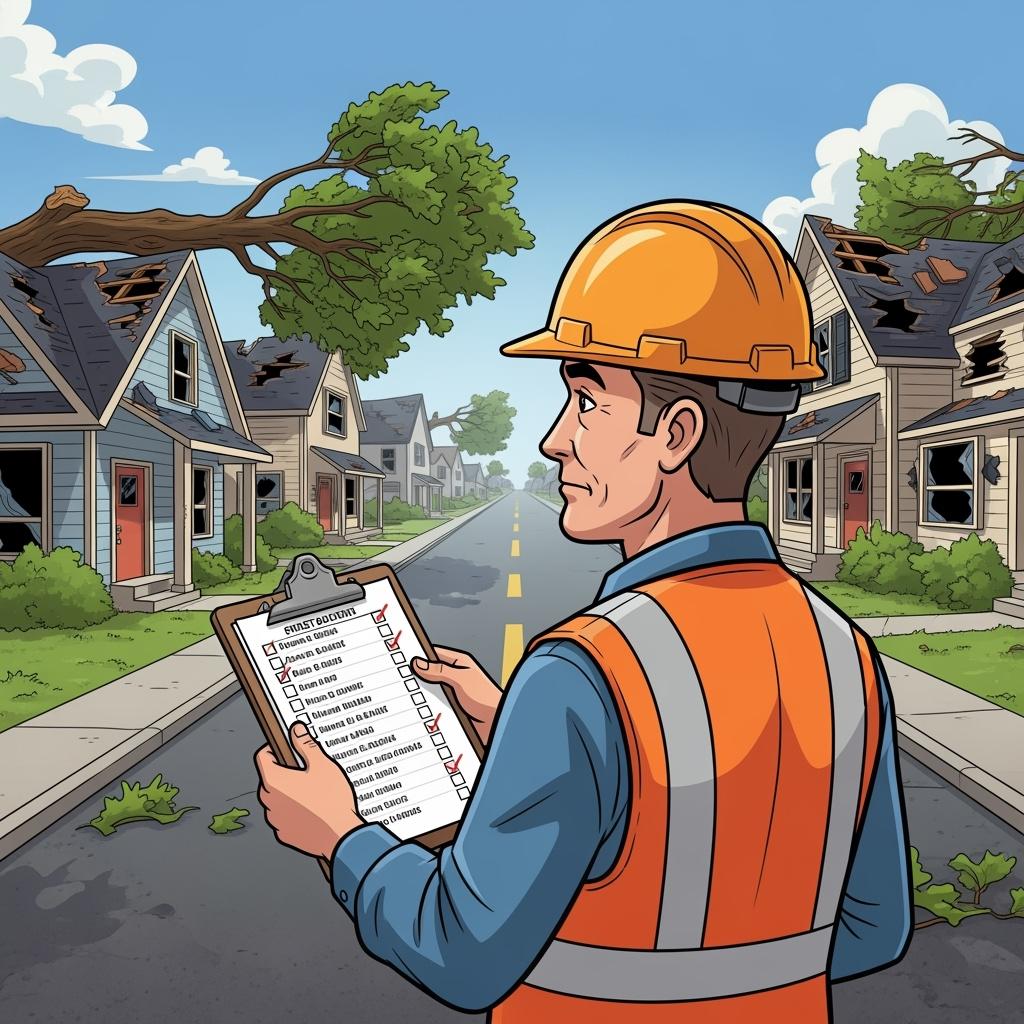





The Approval Process
The insurance company will evaluate various factors, including information provided by your restoration contractor, to decide on your claim. Most insurance companies recognize that mitigation work may need to begin before receiving an estimate and allow work to commence without prior approval.
Once the restoration work is completed, the contractor will provide a final estimate or invoice to both you and the insurance company. It is then up to the contractor and the insurer to agree on the final invoice amount.
The contractor must submit their final mitigation estimate, along with supporting documentation, including photos of the work completed. Once an agreement is reached, the insurance company will issue a multi-party check that includes you, the restoration contractor, and your mortgage company if applicable.
Navigating the insurance claims process effectively requires attention to detail and clear communication. By understanding the factors that influence claim processing times and being proactive in your documentation and communication, you can help ensure that your claim is handled efficiently and fairly.
Conclusion
Handling insurance claims after property damage is a complex process, but following these steps will help you navigate it more effectively. Always prioritize safety, and remember that a reliable restoration company can be your best ally in ensuring a smooth claims process. If you need assistance, EMS Restoration is here to guide you through every step of the journey to restore your home
What Makes EMS Restoration Different?
- 24/7 Availability
- Industry Leading Technicians
- Licensed, Bonded, & Insured
- 100% Client Satisfaction
- Free & Honest Estimates
- Veteran Owned & Operated

